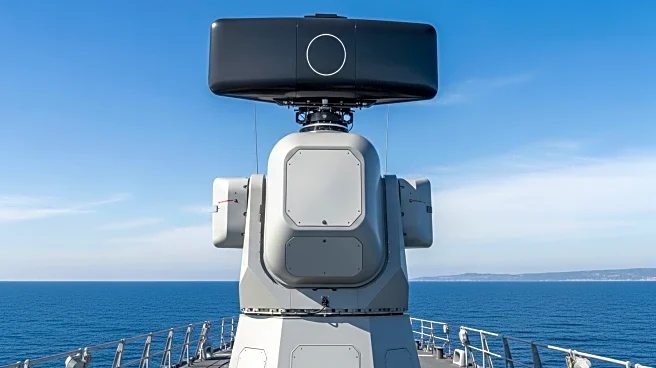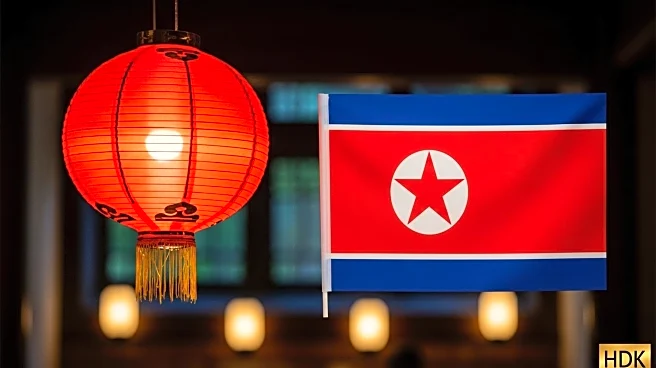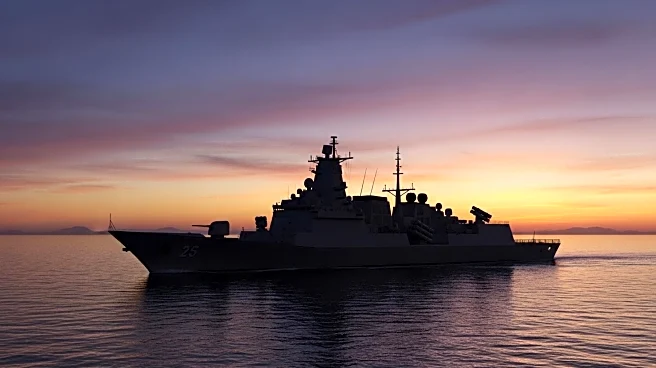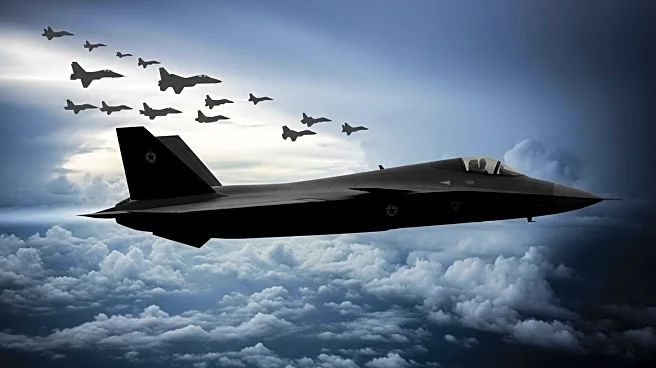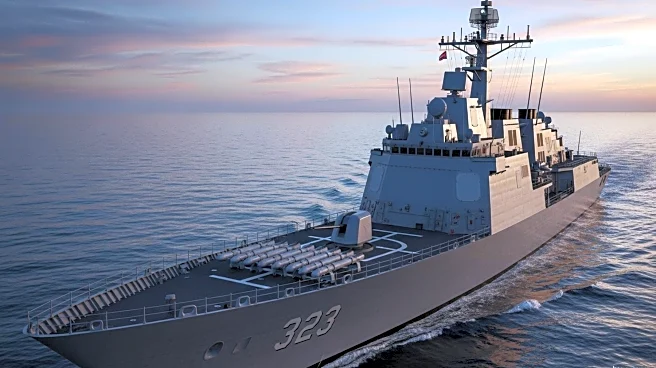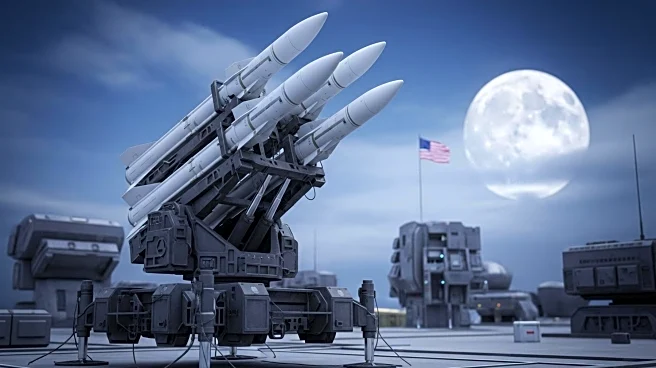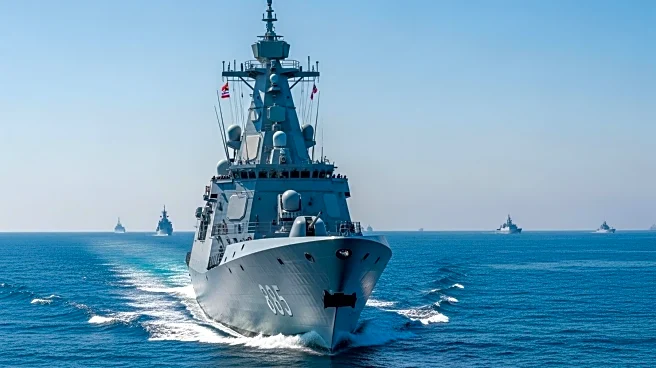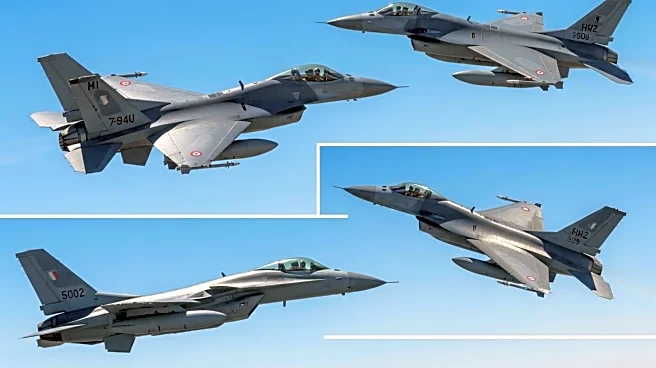What is the story about?
What's Happening?
Lockheed Martin has announced the successful initial power-up of the Aegis System Equipped Vessel's Shipset 1 radar system at a test facility in Moorestown, New Jersey. This radar system, including four AN/SPY-7(V)1 antennas, is part of Japan's efforts to bolster its defense against ballistic missile threats from China and North Korea. The radar system is designed to detect, track, and engage multiple sophisticated ballistic missile and advanced air threats simultaneously. Japan has been enhancing its military capabilities with U.S. assistance, acquiring 400 long-range Tomahawk cruise missiles and constructing two large naval ships, known as Aegis System Equipped Vessels, to intercept ballistic missiles. The first shipset radar system, handed over to Japan's Defense Ministry in June, is set to be delivered to Japan next year after completing tracking exercises.
Why It's Important?
The development of the Aegis System Equipped Vessels is crucial for Japan's national security, given the missile threats posed by China and North Korea. China's missile capabilities can target Japan, including U.S. military bases, as part of its strategy to counter U.S. influence in East Asia. North Korea's frequent missile tests further underscore the need for robust defense systems. The collaboration with Lockheed Martin and the deployment of advanced radar systems enhance Japan's ability to intercept and neutralize potential threats, thereby strengthening regional stability and U.S.-Japan defense ties. This development also reflects the growing importance of technological advancements in defense strategies.
What's Next?
The radar system will undergo comprehensive testing to validate its performance before being delivered to Japan. The second shipset is also expected to be tested and verified. Japan may consider further enhancing its defense capabilities by building additional naval vessels to intercept missile threats. The Aegis System Equipped Vessels are expected to be operational by 2027, classified as guided-missile cruisers due to their size and capabilities. This ongoing development will likely influence regional defense dynamics and may prompt responses from neighboring countries.
Beyond the Headlines
The deployment of advanced radar systems and missile interceptors raises ethical and strategic questions about the militarization of technology and its impact on international relations. The collaboration between the U.S. and Japan highlights the role of defense technology in geopolitical strategies, potentially leading to an arms race in the region. The integration of such systems also reflects the increasing reliance on technology for national security, which may influence future defense policies and international agreements.
AI Generated Content
Do you find this article useful?
